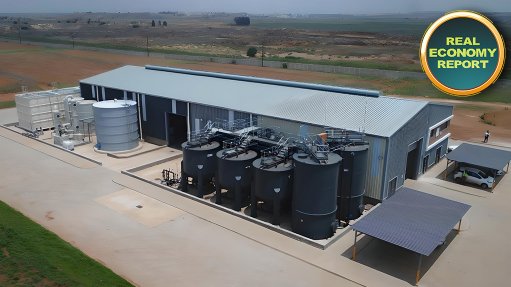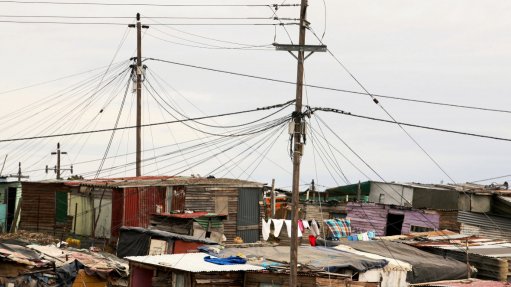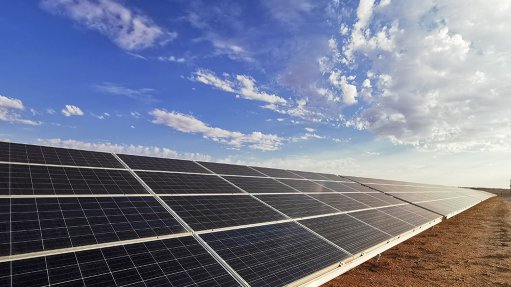Loadshedding to persist as EAF worsens, CSIR says
Research by the Council for Scientific and Industrial Research (CSIR) has indicated that the energy availability factor (EAF) of State-owned power utility Eskom has worsened, with this manifesting in worsening loadshedding.
Speaking during a loadshedding statistics and water cuts briefing on February 22, CSIR Energy Systems Energy Centre principal researcher Warrick Pierce said the primary reason for this research being undertaken was to inform and assist decision-makers to make smarter choices.
He pointed out that government and Eskom had both been transparent about the fact that there was an energy crisis, and that this was worsening, evidenced by the increasing stages and frequency of loadshedding.
Pierce pointed out that loadshedding was a symptom, and not a cause, as the country’s electricity supply was insufficient to reliably meet demand.
He explained that, in previous years, this was because of a capacity shortage, but now, there was both a capacity and energy shortage.
Pierce said Eskom’s declining EAF trend continued into 2022 to an average weekly EAF of 58.1%. This also saw the weekly average EAF hit a new low of 48.6% (the first year that it dropped under 50%).
Pierce warned that the unplanned outages (breakdowns) component was increasingly trending in a worrying direction.
He elaborated that there had been a shift from similar levels of planned maintenance (PCLF) and unplanned outages (UCLF) in 2018 towards increasing distribution of UCLF as the years have progressed since then.
He notes that 2021 saw a distinct separation (in the statistical distribution) of UCLF and PCLF as unplanned outages continued to increase, and this trend continued in 2022.
Pierce noted that 2022 overtook 2021 as the most intensive loadshedding year yet, and further, it exceeded 2019’s Stage 6 loadshedding by more than 30 times.
The collective in the three months of July to September 2022 was more loadshedding experienced in any year before, he added. Also, December 2022 was an exceptionally high month in terms of loadshedding.
Pierce said 2022 was the first year that the majority of loadshedding had not been Stage 2, but Stage 4. Stage 6 loadshedding had far surpassed that of 2019, the only other year that Stage 6 was implemented, he added.
Pierce pointed out that the country was unable to generate enough electricity to cover the peak demand, owing to declining performance of Eskom’s fleet over the years, with the requisite maintenance also not undertaken.
In terms of loadshedding, Pierce pointed out that, since 2018, there had been an almost exponential growth experienced, with a significant increase from 2021 to 2022.
In terms of when a turnaround could be expected, Pierce said metrics to look out for would be when the EAF starts to stabilise and improve, and when an additional generation capacity actually begins to be connected to the grid.
Pierce also touched on the country’s variable renewable energy (VRE), noting that with wind, solar and independent power producers projects successfully coming online since 2010, this has provided some relief.
Pierce pointed out that there was an argument that VRE would not be enough to get the country out of the current crisis. If it were purely a capacity crisis, this would have been the case, he argues, however, considering that the CSIR now sees it as an energy crisis, every megawatt-hour generated helps to reduce the crisis, he explained.
The frequent power cuts being experienced in the country are also indicated to have had a considerable impact on the country’s water distribution and processing systems, which rely heavily on a steady supply of energy.
It was noted that electricity was needed to pump the water from its source to where it was required, as well as for safety and security to project the resources from vandalism and the like.
Also, electricity is needed for instrumentation, such as measuring the water levels and maintaining these so that overflows do not occur, and to operate water infrastructure efficiently.
Some measures to provide some relief include reporting and fixing leaks, exploring hydropower solutions where feasible, using smart water management systems, and implementing water reuse measures.
Comments
Research Reports
Projects
Latest Multimedia
Latest News
Showroom
Supplier & Distributor of the Widest Range of Accurate & Easy-to-Use Alcohol Breathalysers
VISIT SHOWROOMAt SMS group, we have made it our mission to create a carbon-neutral and sustainable metals industry.
VISIT SHOWROOMPress Office
Announcements
What's On
Subscribe to improve your user experience...
Option 1 (equivalent of R125 a month):
Receive a weekly copy of Creamer Media's Engineering News & Mining Weekly magazine
(print copy for those in South Africa and e-magazine for those outside of South Africa)
Receive daily email newsletters
Access to full search results
Access archive of magazine back copies
Access to Projects in Progress
Access to ONE Research Report of your choice in PDF format
Option 2 (equivalent of R375 a month):
All benefits from Option 1
PLUS
Access to Creamer Media's Research Channel Africa for ALL Research Reports, in PDF format, on various industrial and mining sectors
including Electricity; Water; Energy Transition; Hydrogen; Roads, Rail and Ports; Coal; Gold; Platinum; Battery Metals; etc.
Already a subscriber?
Forgotten your password?
Receive weekly copy of Creamer Media's Engineering News & Mining Weekly magazine (print copy for those in South Africa and e-magazine for those outside of South Africa)
➕
Recieve daily email newsletters
➕
Access to full search results
➕
Access archive of magazine back copies
➕
Access to Projects in Progress
➕
Access to ONE Research Report of your choice in PDF format
RESEARCH CHANNEL AFRICA
R4500 (equivalent of R375 a month)
SUBSCRIBEAll benefits from Option 1
➕
Access to Creamer Media's Research Channel Africa for ALL Research Reports on various industrial and mining sectors, in PDF format, including on:
Electricity
➕
Water
➕
Energy Transition
➕
Hydrogen
➕
Roads, Rail and Ports
➕
Coal
➕
Gold
➕
Platinum
➕
Battery Metals
➕
etc.
Receive all benefits from Option 1 or Option 2 delivered to numerous people at your company
➕
Multiple User names and Passwords for simultaneous log-ins
➕
Intranet integration access to all in your organisation


















